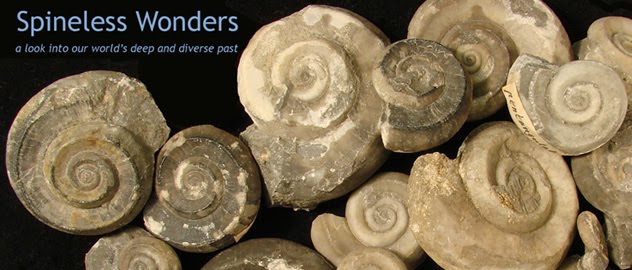 Some times localities are written directly on specimens. A great thing about this method is that the locality information is retained even if the paper label is lost. One problem is that these types of things are often not very specific.
Some times localities are written directly on specimens. A great thing about this method is that the locality information is retained even if the paper label is lost. One problem is that these types of things are often not very specific. Take this coral for example. It is from Gothland (or Gotland). Gotland is an island off the coast of Sweden. It is particularly well known for its Silurian fossils. It is also over 3000 square kilometers.

Some times extensive information is inscribed directly on the fossil. This bivalve has been inscribed with its name, locality and provenance. All of this information is still legible too (which doesn't always happen when things are written in pencil).
Lesson to be learned to today: take copious notes. You may think it is too much information, but any clue can be helpful in determining where a fossil came from, and how it arrived at the museum. While writing on a specimen is often impossible, adding at least a town name (or an island) can be helpful in narrowing down the original locality. Write everything down in a notebook as well. When you donate your collection to the museum, give them your notebook too. We'll promise to keep it away from the book lice!


No comments:
Post a Comment